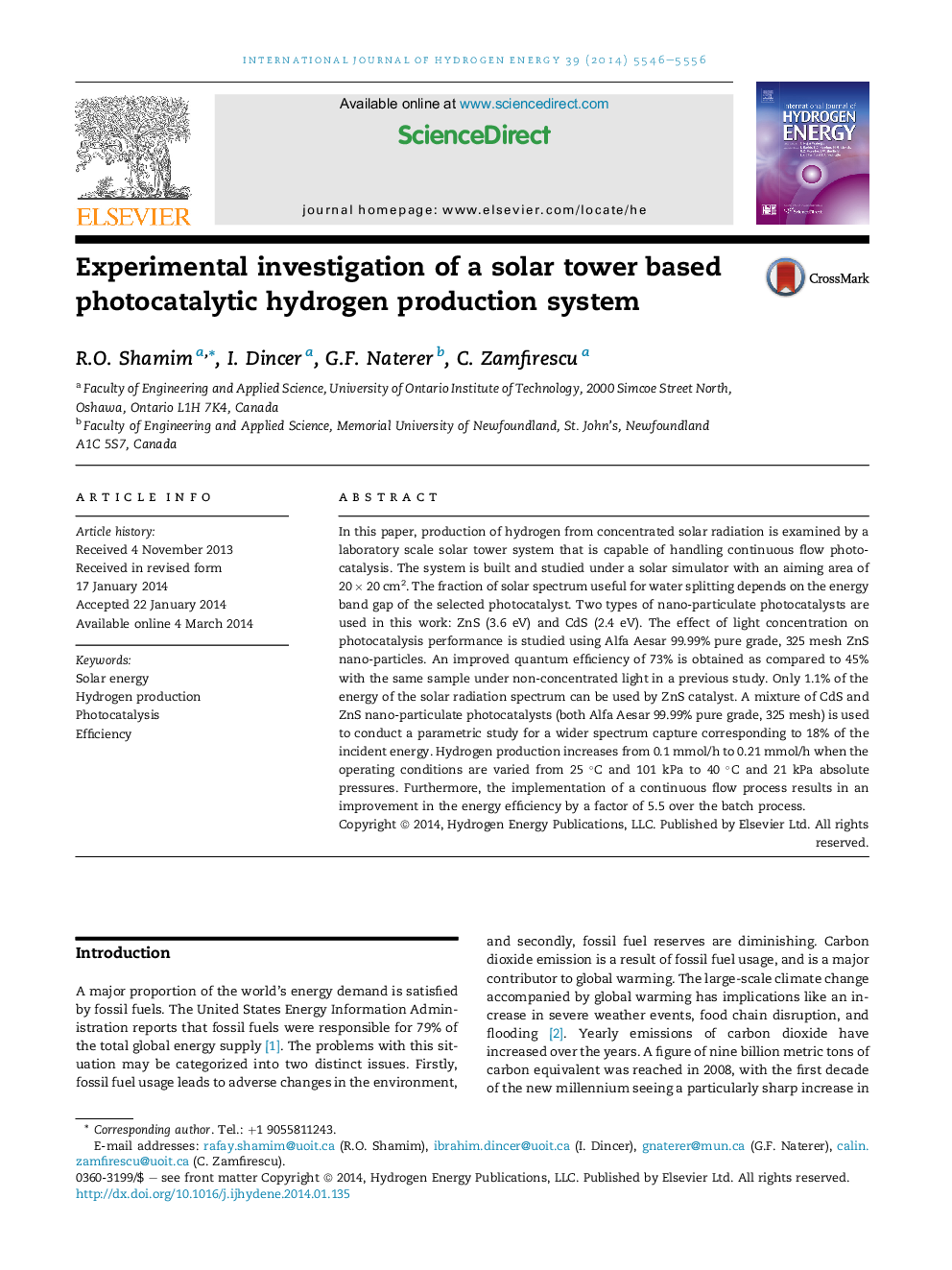| Article ID | Journal | Published Year | Pages | File Type |
|---|---|---|---|---|
| 7719451 | International Journal of Hydrogen Energy | 2014 | 11 Pages |
Abstract
In this paper, production of hydrogen from concentrated solar radiation is examined by a laboratory scale solar tower system that is capable of handling continuous flow photocatalysis. The system is built and studied under a solar simulator with an aiming area of 20 Ã 20 cm2. The fraction of solar spectrum useful for water splitting depends on the energy band gap of the selected photocatalyst. Two types of nano-particulate photocatalysts are used in this work: ZnS (3.6 eV) and CdS (2.4 eV). The effect of light concentration on photocatalysis performance is studied using Alfa Aesar 99.99% pure grade, 325 mesh ZnS nano-particles. An improved quantum efficiency of 73% is obtained as compared to 45% with the same sample under non-concentrated light in a previous study. Only 1.1% of the energy of the solar radiation spectrum can be used by ZnS catalyst. A mixture of CdS and ZnS nano-particulate photocatalysts (both Alfa Aesar 99.99% pure grade, 325 mesh) is used to conduct a parametric study for a wider spectrum capture corresponding to 18% of the incident energy. Hydrogen production increases from 0.1 mmol/h to 0.21 mmol/h when the operating conditions are varied from 25 °C and 101 kPa to 40 °C and 21 kPa absolute pressures. Furthermore, the implementation of a continuous flow process results in an improvement in the energy efficiency by a factor of 5.5 over the batch process.
Related Topics
Physical Sciences and Engineering
Chemistry
Electrochemistry
Authors
R.O. Shamim, I. Dincer, G.F. Naterer, C. Zamfirescu,
